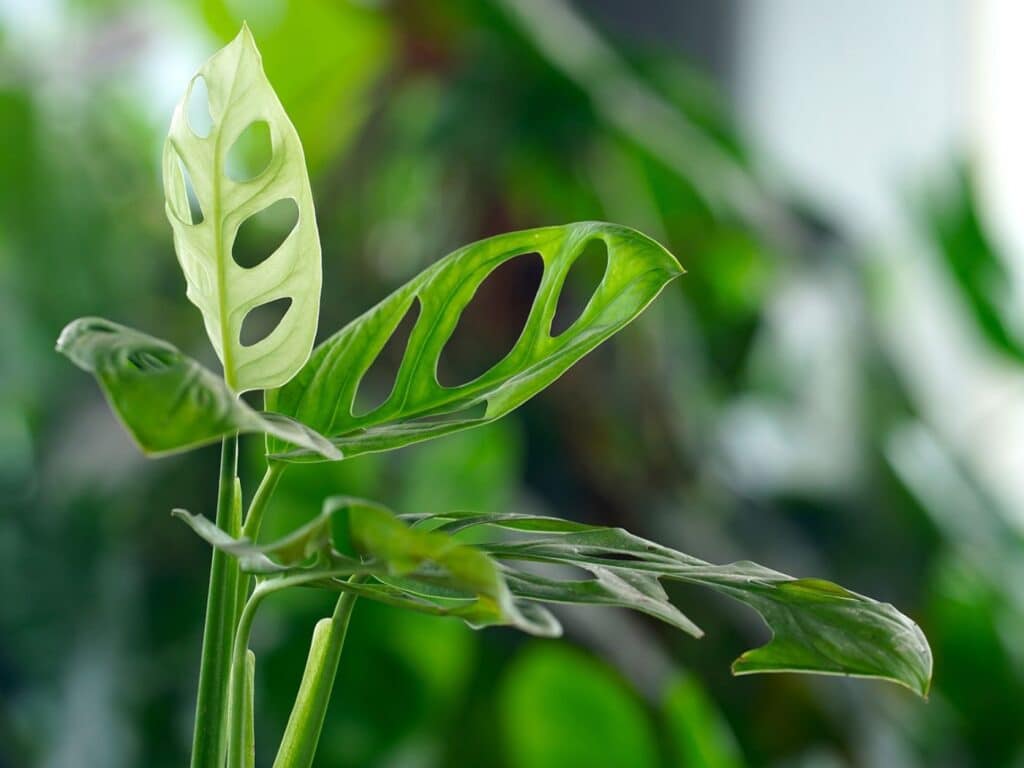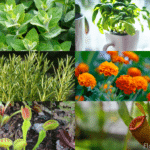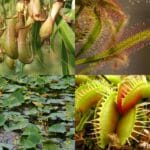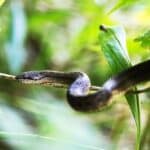You’ve nurtured your Swiss cheese plant, watching it grow, marveling at its unique, perforated leaves. But recently, you’ve noticed a troubling sign: yellow leaves tarnishing its lush, green beauty. Before panic sets in, understand that you’re not alone in this.
Many plant enthusiasts face this issue, yet the solution is often simpler than you may well think.
Yellowing leaves can be a cry for help from your Swiss cheese plant, signaling anything from water stress to nutrient deficiencies. It’s a problem that demands attention but isn’t a death sentence for your beloved green friend.
In this article, we’ll delve into the common causes of yellow leaves and provide you with actionable advice to restore your plant’s vibrant health. Let’s embark on this green journey together, turning those yellow warnings into a roadmap for thriving plant care.
Understanding Swiss Cheese Plant Yellow Leaves
Engagement with your Swiss cheese plant doesn’t end at admiring its unique perforations; addressing the occasional yellow leaf is part of the journey too. Let’s dive into the causes and what those changing leaf colors really mean for your plant.
Causes of Yellowing Leaves
Encountering yellow leaves on your Swiss cheese plant may well initially startle you, but it’s a common sign that your plant is communicating its needs. Over-watering stands as a prevalent issue, leading to waterlogged roots that struggle to breathe.
Conversely, under-watering can leave your plant parched, with its leaves turning yellow as a distress signal. Lighting also plays a pivotal role; too much sun scorches leaves, while too little dims their vibrant green hue. Nutrient imbalances, particularly a lack of essential elements like magnesium and iron, can further exacerbate the yellowness.
Lastly, don’t overlook the natural aging process; older leaves will sometimes yellow and drop off, making way for fresh growth.
Significance of Leaf Color Changes
Yellow leaves on your Swiss cheese plant aren’t just for show; they’re a cry for help and a chance for you to turn things around. Leaf color changes are the plant’s way of signaling that its environment isn’t quite right.
Whether it’s thirst, a sunburn, or a hunger for nutrients, those yellow leaves are your clues to recalibrate your care routine.
Paying attention to these signals can prevent more serious issues from developing, keeping your plant thriving and adding that much-needed greenery to your space. Remember, a spot of yellow here and there opens up an opportunity for a green thumb masterclass, courtesy of your Swiss cheese plant.
Environmental Factors Affecting Leaf Color

Addressing yellow leaves on your Swiss cheese plant goes beyond simple care; it involves understanding the environmental factors at play. This section dives into the key aspects of light exposure, watering habits, and temperature stress that could be turning your plant’s leaves yellow.
Light Exposure and Its Impact
Bright, indirect light is the sweet spot for Swiss cheese plants. Too little light and the leaves may well yellow and drop as the plant struggles to photosynthesize.
Conversely, too much direct sunlight can scorch the leaves, causing them to yellow and crisp. Finding a window that offers plenty of light without the harsh afternoon sun is your best bet. Think of it like finding a comfortable spot in the shade on a sunny day – your plant craves the same kind of protection and optimal lighting conditions.
Watering Habits and Soil Moisture
Watering can be tricky with Swiss cheese plants. Overwatering leads to soggy roots and, you guessed it, yellow leaves. Underwatering, conversely, will dehydrate your plant, leaving the leaves yellow and wilted.
The key here is consistency and ensuring the soil is moist but not waterlogged. Imagine wearing wet socks – plants dislike standing in water as much as you do. Use your finger to check the soil moisture; if the top inch is dry, it’s time to water.
Temperature Stress and Its Effects
Swiss cheese plants are quite picky about their temperature range, preferring a consistent 60-80°F (16-27°C). Temperature fluctuations can stress them out, leading to yellow leaves. Cold drafts and sudden changes in temperature, like moving your plant from a cozy room to a chilly one, can shock your Swiss cheese plant.
It’s a bit like how you may well catch a cold if you were suddenly exposed to the cold after being in a warm room; your plant reacts in a surprisingly similar way. Keeping your plant in a stable environment away from drafts and drastic temperature changes will keep it healthy and green.
Nutritional Deficiencies and Plant Health
Importance of Proper Fertilization
Ensuring your Swiss cheese plant receives the right nutrients is crucial for keeping those leaves vibrant and healthy. Just like us, plants can feel under the weather if their diet isn’t balanced. Think of fertilizer as a multi-vitamin for your plant.
Skipping it is like forgetting breakfast – the plant won’t have the energy it needs to thrive. Aim for a balanced, water-soluble fertilizer applied during the growing season, spring through summer, to keep your Swiss cheese plant in top shape.
Identifying Nutrient Shortages
Noticing yellow leaves? It may well be time to play detective with your Swiss cheese plant’s diet. Nitrogen, for example, is a big deal for plants – it’s like the protein in their diet.
A lack of nitrogen is a common culprit behind yellow leaves. Conversely, yellow patches or spots could hint at a potassium deficiency, essential for water regulation and nutrient transport within the plant. If you see these symptoms, consider a fertilizer with a good mix of nitrogen, phosphorus, and potassium to get your plant back on track.
Remember, the goal is happy, healthy green leaves – a sign your Swiss cheese plant is getting what it needs.
Common Diseases and Pests
Recognizing Signs of Infection
Identifying infections in your Swiss cheese plant involves spotting unusual changes in the leaves. If you notice brown spots edged with yellow, these could be a telltale sign of fungal infections.
Conversely, tiny holes in leaves that aren’t part of the plant’s natural pattern may indicate pest infestations, such as spider mites or scale insects. These pests suck the sap from the leaves, leading to yellowing and possibly plant death if not addressed.
Additionally, a sticky residue on the plant or nearby surfaces often accompanies an aphid attack, another common pest problem. Vigilance helps catch these issues early, preventing widespread damage.
Preventative Measures and Treatments
To guard your Swiss cheese plant against diseases and pests, maintain a clean environment. Regularly inspecting leaves, both top and underside, and removing any debris from the topsoil can thwart potential invaders.
Ensure your plant receives adequate air circulation; this can significantly reduce the risk of fungal diseases. Should an infection or infestation occur, isolate the affected plant to prevent spreading. For fungal issues, remove infected parts and treat the plant with a fungicide.
In the case of pests, a gentle wash with insecticidal soap or a neem oil solution often proves effective. Remember, consistent care is your best defense, keeping your Swiss cheese plant healthy and more resilient against diseases and pests.
Care Tips for Preventing Yellow Leaves
Best Practices for Watering
Swiss cheese plants thrive with a balanced moisture regimen, but getting it just right can feel like walking a tightrope. Too much water and the roots drown; too little and the leaves turn yellow, signaling distress.
Aim to keep the soil consistently moist, but not waterlogged. Check the top inch of soil; if it’s dry, it’s time to water. If unsure, opt to wait a day—these plants forgive a slight delay better than an overzealous pour.
Optimal Lighting Conditions for Healthy Growth
Lighting is like a Swiss cheese plant’s best friend—it needs just the right amount to show off its vibrant leaves. Bright, indirect light is the gold standard. Direct sunlight?
A big no-no, as it can scorch the leaves, leading to those undesired yellow spots. If your room lacks natural light, consider a grow light. It mimics the sun’s rays, without the risk of sunburn for your leafy companion.
When and How to Fertilize Properly
Think of fertilizer as a booster shot for your Swiss cheese plant. During the growing season, spring through summer, a monthly dose of balanced, water-soluble fertilizer supports lush, green growth.
However, too much enthusiasm with fertilizer can overwhelm your plant, leading to nutrient burn. Dial back in the cooler months; your plant is resting and needs less to stay healthy. Remember, moderation is key—both for the plant’s diet and your peace of mind.
Advanced Solutions for Troubled Plants
When to Consider Repotting
Your Swiss cheese plant may send out an SOS with yellow leaves, signaling it’s time to think about repotting. This move is crucial if the roots are starting to circle the bottom of their current home, yearning for more space.
Typically, spring is the prime time to repot as the plant enters its growth phase, ready to take advantage of the fresh soil and extra room. Remember, this isn’t just about upsizing; it’s about giving your plant a renewed environment where it can thrive.
Using Supplements and Additives
Supplements and additives can be game-changers for your Swiss cheese plant experiencing yellow leaves due to nutrient deficits. Consider integrating a balanced, water-soluble fertilizer into your care routine, especially during the growing seasons of spring and summer.
However, moderation is key—too much of a good thing can lead to fertilizer burn, evidenced by brown, crispy leaf edges.
Additionally, incorporating additives like fish emulsion or seaweed extract can promote robust growth and leaf coloration. These supplements act like a plant spa, offering that extra oomph your green buddy needs to stay lush and vibrant.
Frequently Asked Questions
Why are my Swiss cheese plant’s leaves turning yellow?
Yellow leaves on a Swiss cheese plant are commonly caused by over-watering, under-watering, inadequate lighting, nutrient deficiencies, or natural aging. It’s crucial to identify the underlying issue to address it properly.
How does light exposure affect my Swiss cheese plant?
Insufficient or excessive light can lead to yellowing leaves. These plants thrive in bright, indirect light. Direct sunlight can scorch the leaves, while too little light can weaken the plant and cause yellow leaves.
What role does watering play in the health of my Swiss cheese plant?
Improper watering, both over-watering and under-watering, can lead to yellow leaves. Over-watering can cause root rot, while under-watering leads to dehydration. Consistent, moderate watering is key to maintaining a healthy plant.
Can temperature fluctuations cause yellow leaves?
Yes, Swiss cheese plants are sensitive to sudden temperature changes. They prefer stable temperatures and can develop yellow leaves in response to cold drafts or excessive heat.
How important is fertilization for Swiss cheese plants?
Proper fertilization is crucial for maintaining vibrant and healthy leaves. A balanced, water-soluble fertilizer used during the growing season acts like a multi-vitamin, providing essential nutrients. However, over-fertilization should be avoided to prevent fertilizer burn.
When should I consider repotting my Swiss cheese plant?
Consider repotting if your plant has outgrown its current pot or if the soil has degraded, affecting water and nutrient availability. Repotting provides fresh soil and more space for roots, encouraging healthy growth.
Are supplements beneficial for my Swiss cheese plant?
Yes, supplements like balanced fertilizers, fish emulsion, or seaweed extract can address nutrient deficiencies and promote robust growth. However, they should be used judiciously to avoid over-fertilization and potential damage to the plant.
Up next: Monstera Leaves Turning Yellow? How to Diagnose and Treat
Image by darkhriss/depositphotos







